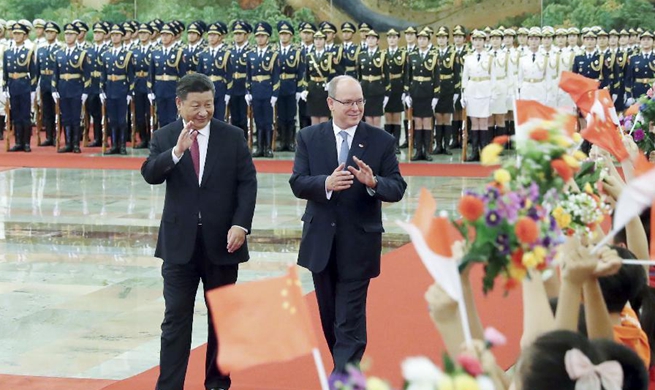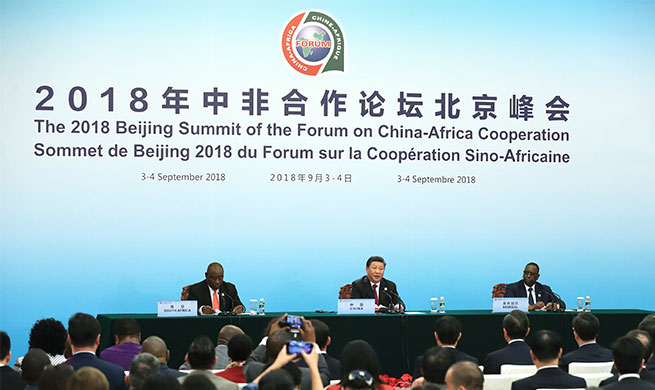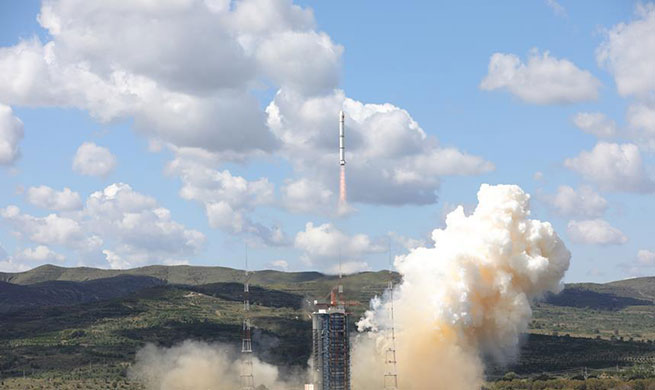By Xinhua Writer/Photographer Qin Lang
NEW YORK, Sept. 7 (Xinhua) -- With the U.S. Open final between Novak Djokovic and Juan Martin del Potro upon us, it is an opportune time to ask what explains the absence of Chinese male players from the highest levels of professional tennis.
Although China has had success on the women’s circuit in the past, with names like Peng Shuai in the top 100 of the current WTA rankings, the highest-ranked player on the ATP side of things is No. 168 Zhang Ze.
Zhang is, of course, only 28, so it is not advisable to count him out in the long-run. But it is worth exploring the reasons behind the scarcity of male players from China on the circuit.
The first reason is an obvious one, but also one that cannot be stressed enough: China lags seriously behind in both talent identification and training infrastructure.
Tennis is a sport that requires early identification of talent so that conditioning can begin at a young age. The specific athletic skills, reflexes, and body conditioning that tennis excellence requires means that habits conducive to success need to be developed at the earliest possible age. This is not to stay that late starters are hopeless in tennis, but they are indeed at a serious disadvantage compared to their counterparts who were scouted early.
There is also an undeniable financial dimension to this issue. Put simply: all of the goodwill in the world toward making men’s tennis a success in China will be worth nothing if the government and private sector are not willing to provide the funding necessary for the training centers, coaches, and tournament entry fees for players.
The effects of this shortage of resources are bound to be more acute in the case of male players, because young boys of considerable athletic ability are likely to be scouted to compete in other sports besides tennis much more readily than their female counterparts.
Young players especially will require serious financial support early on in their careers, before their prize money chest is built up and sponsorship opportunities begin rolling in. Tennis players can only be self-supporting in terms of costs once they hit a stride of good form in the peak of their careers.
The opportunities will likely last well past their career on the court itself, as has been the case with Li Na, but in the early stages, funds are needed to sustain the player as they get their footing on the circuit.
We can also cast this issue in a wider, regional context. Asian countries in general lag behind their European and American counterparts in terms of prospects on the tennis court. There is a cultural dimension to this issue as well; Europe and the United States have an engrained tennis culture. Coaches are constantly scouting for good players. Talents can secure sponsorship deals more readily even in the earlier stages of their career.
China, and its counterparts in Asia, should begin taking serious, concrete steps to turn the continent into fertile ground for the next generation of tennis players to thrive.
The absence of Chinese male players on the circuit today should not signal crisis. It must signal opportunity to do better and create the conditions that, someday, will allow a Chinese male player to step onto the court at a Grand Slam final.
(Edited by Spencer Musick; The writer has covered four U.S. Open championships as a photographer)

















